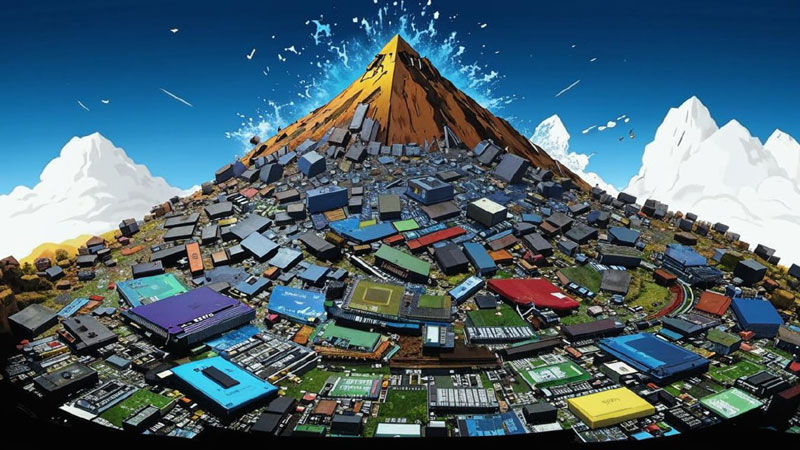AI will litter the Earth with millions of tons of electronic waste every year


The widespread interest in generative artificial intelligence will have tangible negative consequences, warn researchers from Israel’s Reichman University. For the first time, scientists have assessed the impact of the AI craze on the amount of e-waste it creates at the end of its life. By the end of the decade, AI will leave behind up to 5 million tons of waste annually, mostly with no hope of recycling.


Image source: AI generation Kandinsky 3.1/3DNews
According to various estimates, at least 60 million tons of electronic waste are generated on the planet every year – from washing machines and air conditioners to computers and phones. By the end of the decade, AI fashion will add to this volume annually from 1.2 to 5 million tons of waste. Since the problem of safe disposal and recycling of waste has not yet been resolved, adding new volumes will only worsen the situation. Fortunately, there are strategies that can mitigate the problem, although implementing them will require the will of the authorities and the willingness of manufacturers and developers.
First of all, everyone needs to realize that you have to pay for recycling. Electronic waste contains substances hazardous to health and nature, such as mercury, cadmium and lead. For the safe disposal of such materials or waste components containing them, special conditions and protection of people involved in recycling are required. Today, electronic waste recycling is mainly carried out in poor countries, where no one is concerned about safety and protection from harmful substances. Gold, silver, copper and other valuable metals are confiscated, and harmful substances with the remains of garbage are simply thrown away wherever necessary, and often this turns out to be the ocean or rivers in the countries of Southeast Asia and Africa.
In the case of platforms for artificial intelligence, the main volume of electronic waste will be represented by video cards, processors, boards, memory and storage devices. The productive life of this equipment is usually two years. Component and platform designers can create upgradeable solutions that can extend component life by up to five years, as well as design solutions that make it easier to recycle components at the end of their service life. With the right strategy, it will be possible to recycle up to 86% of the e-waste generated by AI, while today no more than 22% of waste is recycled.
«It is critical for companies and manufacturers to take responsibility for the environmental and social impacts of their products, say the study authors. “This way we can be sure that the technology we rely on does not harm the health of people and the planet.”
Recent Posts
Nissan Leaf EV to Become NACS-Ported Compact Crossover in Third Generation
Nissan Leaf can rightfully be considered a long-liver of the electric car market, since the…
OpenAI expects to more than triple its revenue this year and then double it next year.
OpenAI, the market leader in generative artificial intelligence systems, remains nominally a startup, its financial…
OpenAI Decides to Hold 4o Image Generation Launch for Free Users
OpenAI has been forced to delay the release of ChatGPT's built-in image generator for free…
1440p and 240Hz for just $200: Xiaomi updates the 27-inch Redmi G27Q gaming monitor
Xiaomi continues to update its Redmi G27Q gaming monitor every year. The model was first…
Beware, Android is shutting down: OS development will cease to be public, but there is no reason to panic
Android device makers can significantly customize the look and feel of the operating system, but…
Fake GeForce RTX 4090s with RTX 3090 chips have started popping up in China — craftsmen are even changing the GPU markings
In China, scammers have started selling GeForce RTX 3090 graphics cards, passing them off as…